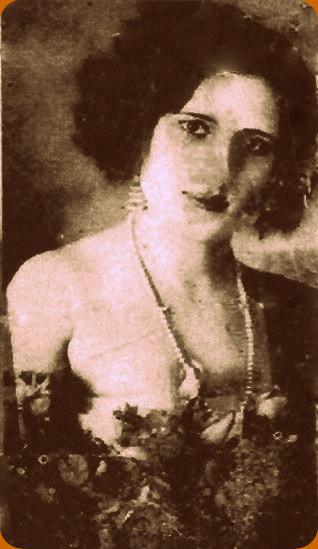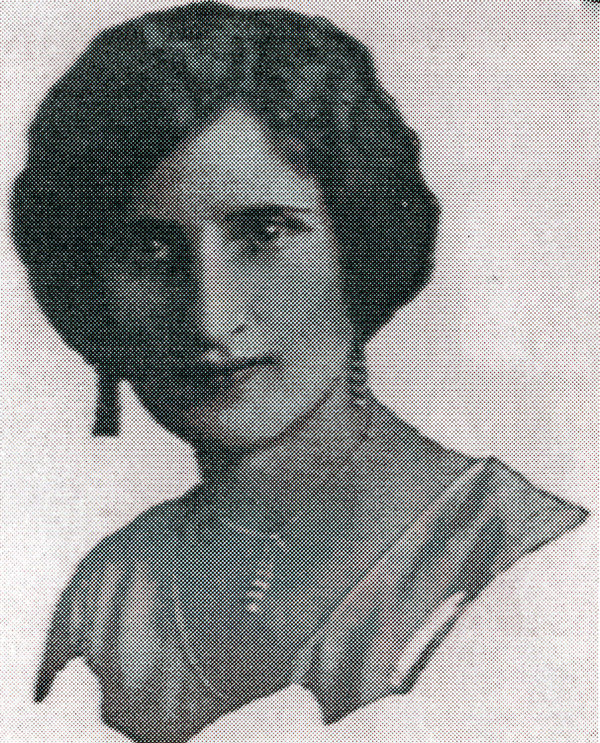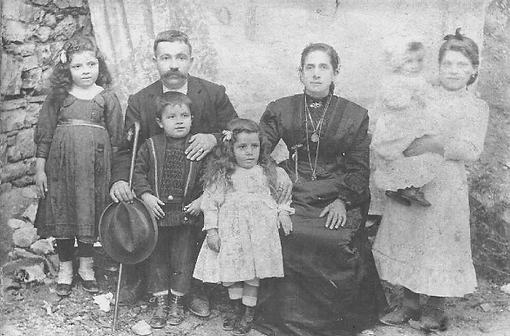15th July, 2022 – Shabbat is almost here
And today we will enjoy with a Jewish rebetissa, that is a female singer of rebetiko: Amalia Bakas (Αμαλία Βάκα).
 Hello. I hope you are well. I am at home again, after the trip to Novi Sad. There is no picture of the synagogue because most of the time we were staying in a hotel half an hour away from the city and without a car and the rest of the time we were watching countless concerts at the EXIT festival, so I have it pending for the next one. But we are not going very far.
Hello. I hope you are well. I am at home again, after the trip to Novi Sad. There is no picture of the synagogue because most of the time we were staying in a hotel half an hour away from the city and without a car and the rest of the time we were watching countless concerts at the EXIT festival, so I have it pending for the next one. But we are not going very far.
The rebetiko of the 20s and 30s of the 20th century is one of my favourite styles of music. I have already dedicated previous issues of MBS to the music of Greek Jews and today we return with another Ioaninna-born artist: the enchanting rebetisa Amalia Bakas.
See previous issues on Jews from Greece:
- Sakis Negrin and the Romaniote Jews
- Romaniote melody for a piyyut for Rosh Hashanah
- About Stella Haskil
Then, please, spread the word.
| Share this with a friend, right from here |
About Amalia Bakas
I will use first the bio from Discogs for this summary.
Amalia Bakas (you can also find it as Vaka) was born as Mazaltov Matsa in a family of Romaniote origin, in 1897 in Ioannina, Greece, at the time when it was part of the Ottoman Empire and she died in 1979 in Florida, US). On the website of the Virtual Museum of the Archive Kounadis it is said that she was born on 15/08/1894, instead of 1897. The rest of data are similar.
“She was sent to the U.S. at 15 years old in 1912 and by her early 20s she was earning a living singing in the emerging coffee houses and nightclubs patronized by Greek and Turkish speaking immigrants.”
“By about 1922, she started recording for the New York Armenian-owned M.G. Parsekian and Sohag labels and for the Chicago-based Greek Record Company.”
“Marika Papagika brought Amalia to Victor (the record label that produced our recording for today), where she recorded 10 12” discs between April 1927 and February 1928.”
 “In early 1929, she made three more 12” discs for Okeh, accompanied by violinist Nishan Sedefjian (with whom she worked off and on for decades) and cymbalom player Ilias ‘Louis’ Rassias.”
“In early 1929, she made three more 12” discs for Okeh, accompanied by violinist Nishan Sedefjian (with whom she worked off and on for decades) and cymbalom player Ilias ‘Louis’ Rassias.”
“Amalia and her daughter Diamond spent the Depression playing the “oriental” nightclubs of 8th Avenue and touring – Detroit, Gary IN, Philadelphia, the Catskills, and Chicago – often with the guitarist, singer, and composer George Katsaros.”
“By 1940, she was living in Chicago’s Greektown, but within a couple of years, she moved back to New York and started recording again for the Balkan Records/Metropolitan Phonograph Record Co. circle of labels for whom she made at least seven discs with a rotating cast of accompanists. She and Diamond performed as a mother-daughter act until 1960. Amalia retired from performing in the early 1960s.”
I haven’t found any recording with the daughter.
The Wikipedia has a bio too. I prefer not to use it as a basis for a summary of the biography but I will take some interesting information. She got married in 1913 with a man from Ioannina who divorced because “the life of a performer was not one a woman of the Romaniote community should be leading” and he sent their daughter Ester to live in Greece.
In 1926 she converted to the Greek Orthodox Church to marry Gus Bakas, of whom she would get the surname that she would use for her artistic career.During the 30s she toured in the USA. During the Second World War she lived in Chicago with Diamond, working and performing in a restaurant.
In the 40s she made several recordings, part of them of Greek songs from the 1910s and 1920s.
About the lives of Romaniote women from Ionnina
 This picture of a Traditional Yanniote Family at turn of the 20th century is from the website of the Kehila Kedosha Janina, where you can learn more about the History of this people.
This picture of a Traditional Yanniote Family at turn of the 20th century is from the website of the Kehila Kedosha Janina, where you can learn more about the History of this people.She had traveled by herself on the Kaiser Franz Josef I, an immense modern ocean liner […]. At Ellis Island she was detained because she did not have the $50 in cash required of new immigrants; after a phone call she was sponsored by her Aunt Rachel. Life in New York demanded money, so Mally got a job sewing in a factory. Circumstance had forced her to accept a level of responsibility and independence forbidden for Romaniote girls in Janina, and with it came opportunities that were also customarily denied.”
About the recording
According to the Discography of American Historical Recordings (and in this case they are the primary source) this recording was done on 11th of April of 1927, with Amalia singing accompanied with violin, oud and santur. It was recorded for Victor, with code CVE-38451. and the name “Paramana cuna cuna” and subtitle “zeibekiko”.
The musicians are not acredited but yes the director: Alfredo Cibelli. He was “mandolinist, singer, and Musical Director of Victor’s Foreign Department (born February 6, 1885 Naples, Italy – died April 23, 1955 New York, NY, USA)”, according to Discogs.
I haven’t found either who is the author and some sources say it is traditional but I can’t believe it totally.
The lyrics are available in Greek here. From the automatic translation I understand that it is a sad song of abandonment: a person goes to work in a bar in Smyrna where customers go to smoke hookahs and leaves the singer in charge of a small child. This person rocks the cradle and has a great sadness, so much so that he considers taking her own life with a knife.
